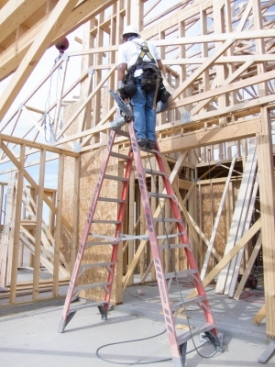Nearly 50% of all private construction in the United States is residential, but most of that construction is incredibly unsafe from a regulatory perspective. On July 11, 2014 Industrial Health published an investigative study of safety training and safety programs in the industry. Of the 200 contractors surveyed, roughly 33% stated they did not have any form of safety program. Only 48% of workers reported that they were provided with safety communication at least once a week,  while 14% communicated monthly, and 10% annually. Within a sample of 33 respondents, 13 were given a verbal safety lecture, 10 on-the-job safety training, 5 were trained during meetings, and 5 were trained from videos, books, and/or brochures. Without standardization, each worker learns about safety to a different degree, meaning some may not get as much as should be required.
while 14% communicated monthly, and 10% annually. Within a sample of 33 respondents, 13 were given a verbal safety lecture, 10 on-the-job safety training, 5 were trained during meetings, and 5 were trained from videos, books, and/or brochures. Without standardization, each worker learns about safety to a different degree, meaning some may not get as much as should be required.
The safety equipment enforced in this industry is also not standardized. The most common types of injuries were found to be slips/trips/falls and cuts/lacerations resulting from a lack or misuse of protective equipment. The most common types of safety equipment included (out of 105 responses): safety glasses, gloves, hearing protection, safety shoes, fall protection, dust masks, hard hats and back support. However, hard hats were reported only 9 times, and back supports just 7, out of 105 responses. Different forms of protection can influence the degree of injury if an accident does occur.
57% of employees reported that their company felt safe, 38% reported their company as very safe, and 5% said neither safe nor unsafe. These results are surprisingly high seeing as most companies are lacking proper safety education and procedures. Further education and training will benefit safety and health of the employees and the entire residential construction industry.








